Tea is an aromatic beverage commonly prepared by pouring hot or boiling water over cured leaves of the Camellia sinensis, an evergreen shrub native to Asia. After water, it is the most widely consumed drink in the world. There are many different types of tea; some teas, like Darjeeling and Chinese greens, have a cooling, slightly bitter, and astringent flavour, while others have vastly different profiles that include sweet, nutty, floral or grassy notes.
Recognition that 70 years after George Orwell’s essay ‘A nice cup of tea’ everyone has a certain way they like theirs. How do you like yours?

Word of the Day
| |||
| Definition: | (noun) A tiny or scarcely detectable amount. | ||
| Synonyms: | iota, scintilla, shred, smidgen, whit | ||
| Usage: | Sydney Carton drank nothing but a tittle coffee. | ||
thanks, shelley

Idiom of the Day
worthy cause— A cause that merits attention, aid, or action due to an inherent goodness of values or intention. |

History
| |||
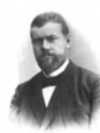 | Weber was a German sociologist and political economist whose most famous and controversial work, The Protestant Ethic and the Spirit of Capitalism, examines the relationship between Calvinist—or Puritan—morality, compulsive labor, bureaucracy, and economic success under capitalism. Weber also wrote about social phenomena such as charisma and mysticism, which he saw as antithetical to the modern world and its underlying process of rationalization. | ||
| |||
 | This ancient Roman festival was held in honor of Pales, the protector of shepherds and their flocks. The Parilia was a pastoral rite observed not only in rural areas but also in Rome, where it coincided with the city's founding in 753 BCE. Although no sacrifices were offered, lustrations (purifying ceremonies) were carried out with fire and smoke. The stables were purified with smoke and swept out with brooms; in rural areas, heaps of straw were set ablaze, and shepherds and their flocks had to pass over them three times. The festival ended with a huge open-air feast. | ||
| |||
| In a case of life imitating art, NASA, like the fictional botanist Mark Watney, is experimenting with growing Martian potatoes, though so far only in the Mars-like soil of the Peruvian desert. | |||
1789 - John Adams was sworn in as the first U.S. Vice President.
1856 - The Mississippi River was crossed by a rail train for the first time (between Davenport, IA, and Rock Island, IL).
1862 - The U.S. Congress established the U.S. Mint in Denver, CO.
1892 - The first Buffalo was born in Golden Gate Park.
1972 - Apollo 16 astronauts John Young and Charles Duke explored the surface of the moon.
1986 - Geraldo Rivera opened a vault that belonged to Al Capone at the Lexington Hotel in Chicago. Nothing of interest was found inside.
1987 - Special occasion stamps were offered for the first time by the U.S. Postal Service. "Happy Birthday" and "Get Well" were among the first to be offered.
1994 - Jackie Parker became the first woman to qualify to fly an F-16 combat plane.
2000 - North Carolina researchers announced that the heart of a 66 million-year-old dinosaur was more like a mammal or bird than that of a reptile.

DAILY SQU-EEK

If You Were Born Today, April 21
You are charismatic and a leader at heart. Always aware of the impact you're making, your gestures are often grand and you do things in a big way. Inner restlessness keeps your life from becoming dull, although your drive for security is very strong. In long-term relationships, your actions speak louder than words, but it wouldn't hurt for you to express your affections verbally more often! Famous people born today: Tony Danza, Queen Elizabeth II, Andy MacDowell, Iggy Pop.
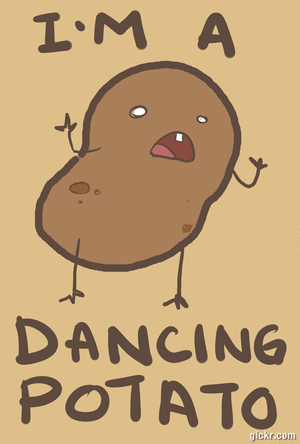
| Picture of the day | |
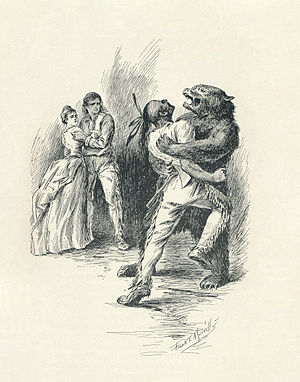 |
An illustration from 1896 edition of James Fenimore Cooper's The Last of the Mohicans. Set during the French and Indian War, the novel details the transport of two young women to Fort William Henry. Among the caravan guarding the women are the frontiersman Natty Bumppo, the Major Duncan Heyward, and the Indians Chingachgook and Uncas. In this scene, Bumppo (disguised as a bear) fights against the novel's villain, Magua, as two of his compatriots look on.
|

A Jungle Down There
Photograph by Matthias Hauser, National Geographic
A hiker is dwarfed by the massive proportions of Hang Son Doong, the largest cave in the world, located in Phong Nha-Ke Bang National Park in Vietnam. It is more than two miles long and, at some places, more than 600 feet high. Where the ceiling has collapsed, allowing sunlight to spill in, vegetation grows heartily.
thanks, patty

knit, MOTHER'S DAY
knit, toe up


knit

knit

thanks, shelley

crochet, MOTHER'S DAY
crochet
crochet

crochet
crochet

Light Show at the Grand Canyon
RECIPE
Sunset In Santorini
CROCKPOT RECIPE
Beef Short Ribs

The Sky Whale
SWEETS, PASSOVER

When Art Meets Nature
CRAFT
DIP DYED CANDLE DIY PROJECT
WITH CRAYON WAX

Underwater Perfection
CHILDREN'S CORNER ... coloring



Fly-by Eclipse
PUZZLE
Shelf Cloud Over Timisoara
QUOTE

Beautiful Barn Conversion

Just Room Enough for One Island
CLEVER
Stitches Dictionary

Coal Train At Sunset
EYE OPENER
Key words and phrases for Passover
myjewishlearning

Afikoman—From a Greek word meaning “dessert.” A piece of matzah that is hidden during the course of the seder, found after dinner, and eaten as dessert at the end of the seder meal.
Arba Kosot — Hebrew for “four cups.” In this case, it refers to the four cups of wine drunk at the Passover seder.
Barekh— The 12th step of the Passover seder, in which birkat hamazon, the grace after meals is said.
Beitzah — Hebrew for “egg.” A roasted or hard-boiled egg is placed on the seder plate to symbolize rebirth.
Chad Gadya —Hebrew for “one goat,” this is the last of the songs sung at the conclusion of the seder and tells the story of the little goat a father bought for a pittance. To hear the song clickhere and for lyrics click here.
Chag Ha Aviv — Hebrew for “The Spring Holiday.” One of the alternate names for Passover.
Dayenu — Hebrew for “enough for us,” this is the name of a song sung at the Passover seder that tells of all the miracles God performed for the Israelites. Listen to it and see the transliteration in this video below.
Gebrochts — Yiddish for “broken,” this refers to matzah that has absorbed liquid. It is customary among some Orthodox Ashkenazi Jews to avoid gebrochts as an extra stringency on Passover.
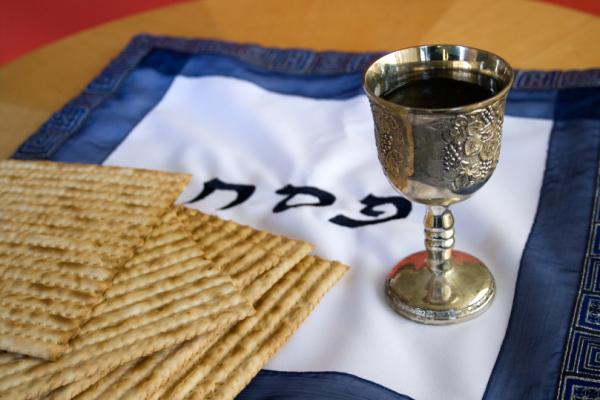
Haggadah — Hebrew for “telling” or “recounting.” A Haggadah is a book that is used to tell the story of the Exodus at the seder. There are many versions available ranging from very traditional to nontraditional, and you can also make your own.
Hallel — The 13th step of the Passover seder, in which psalms of praise are sung.
Hametz — Bread or any food that has been leavened or contains a leavening agent, hametz is prohibited on Passover.
Haroset — A sweet mixture of nuts, wine, and apples on the seder plate that symbolizes the mortar used by slaves in Egypt.
Hol HaMoed — The intermediate days of the holiday, between the first two days of holiday, and the last two days of holiday.
Kaddesh — The first step of the Passover seder, in which a blessing over a glass is recited.
Karpas — The third step of the Passover seder, in which a piece of greenery such as parsley is dipped into salt water and then eaten.
Kitniyot — Hebrew for legumes, the term here also includes corn and rice. These items were prohibited for use on Passover by some Ashkenazic rabbis in the medieval period, but many Sephardic Jews (and increasingly Conservative Jews) do allow them on Passover.
Korekh — The ninth step in the Passover seder, in which bitter herbs are eaten together with a piece of matzah.
Maggid — The fifth and most substantial step of the Passover seder, in which the story of the Exodus is recounted.

Maror — Bitter herbs. The eighth step in the Passover seder, in which the herbs (usually horseradish), symbolizing the bitterness of life under Egyptian rule, are eaten.
Matzah — Unleavened bread. According to the Bible the Israelites ate matzah right before they left Egypt. Today matzah is eaten during Passover to commemorate the Exodus from Egypt.
Motzi Matzah — The seventh step in the Passover seder, in which a piece of matzah is eaten.
Nirtzah — The 14th and final step of the Passover seder, in which the night is concluded by saying “Next year in Jerusalem.”
Pesach —Hebrew for “pass over.” Cooked meat that, according to the Bible, was eaten by the Israelites just before they left Egypt.
Rahtza — The sixth step of the Passover seder, in which the hands are washed for a second time, and a blessing is recited.
Seder — Hebrew for “order.” The Passover ritual where family and friends gather on the first one or two nights of Passover to retell the story of the Exodus. The story is told in a particular order, with specific rituals.
Shir Hashirim — The Song of Songs, the text read in synagogue during the Shabbat of Passover.
Shulhan Orekh— The 10th step in the Passover seder, in which the meal is served. Pass the matzah balls!
Tzafun — The 11th step of the Passover seder, in which the afikoman is found and eaten as dessert.
Urchatz — The second step of the Passover seder, in which the hands are washed but no blessing is recited.
Yahatz — The fourth step of the Passover seder in which a piece of matzah is broken in half.

Zeroa — Shank bone. The bone is placed on the seder plate and recalls the blood on the doorposts and the terror and the anticipation of the night of the plague of the first born.

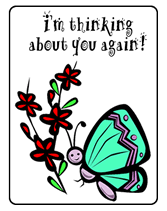





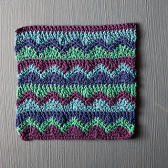

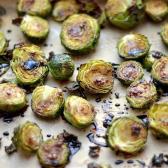





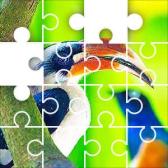





I've gotta color those stacked teacups--I need a stress reliever:) Hats off to the Queen--even if she isn't ours here in the USA.
ReplyDelete